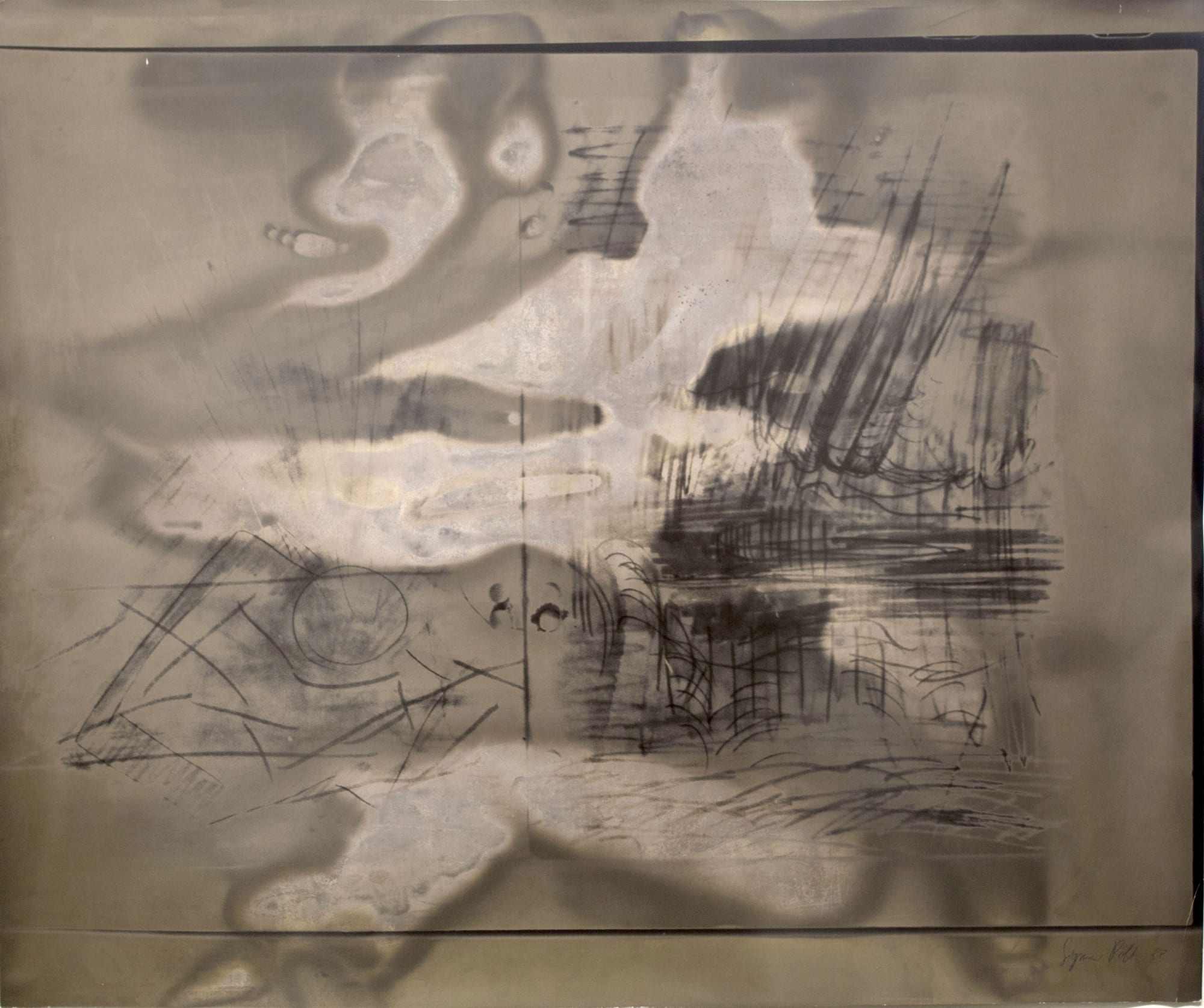-
Artworks
Sigmar PolkeUntitled, 1988Gelatin silver photogram19 3/4 x 23 1/4 in. (50.2 x 59 cm)(BSG 45)***SIGMAR POLKE (GERMAN, 1941-2010)
Polke’s complex and layered paintings played an important role in the resurgence of modern German art. He emigrated with his family from East Germany to West Germany in 1953, settling in Düsseldorf, where he studied at the Staatliche Kunstakademie from 1961 to 1967. His paintings of the 1960s, done in a style known as Capitalist Realism, both mimicked and challenged American Pop art, using recognizable imagery often derived from photography and advertising to invite a more critical social and economic analysis of American capitalism and its ramifications. Polke’s use of paint to replicate the half-tone dot process of newspaper photographic reproduction gave paintings such as Bunnies (1966)—a reference to the byname of the hostesses at Hugh Hefner’s Playboy Clubs for men—a blurred and dreary quality, ironically causing the women, dressed in sexy costumes, to physically and psychologically disappear from view.
In 1970, he would work mainly on photography and film, documenting his travels to New York and Paris. He moved back to painting in the 1980s, where he started incorporating natural materials into his work, evolving his work to move towards Neo-Expressions. This movement picked up during this time. He continued to expand his creativity towards painting until his death.
Polke has been featured in numerous exhibitions, his first retrospective at the San Francisco Museum of Modern Art, The Smithsonian Institutions, Washington DC; the Museum of Contemporary Art, Chicago; The Brooklyn Museum, New York; The Museum of Contemporary Art, Los Angeles 1995-97, the J. Paul Getty Museum, and many other countries. He has also been featured in many biennales, including Documenta 5, the Biennale de São Paulo, the Venice Biennale, and the Venice Biennale. He also has many permanent collections at major museums internationally.
